The Government has said that calculators will be banned in maths tests for 11-year-olds from 2014. Here are five cool apps for Android and IOS that should help pupils to sharpen their mental arithmetic and learn how to do more maths in their minds.
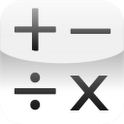
A no-nonsense app with a plain but clean interface, Math Workout helps pupils practice addition, subtraction, multiplication, division, indices, decimals and more. Its “Brain Cruncher” mode is good for training the mind to hold numbers in memory, and the “Times Table Master” should be particularly useful to primary pupils who are laerning their tables. Players must complete quite a few rounds on the easier levels to unlock the harder ones: this should ensure that pupils master the basics before moving on to harder questions, though it may irritate more accomplished mental mathematicians.
Links to app: Android, Android (Free version)
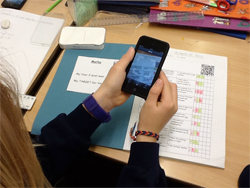
Since the beginning of September, we have been trying to maximise the use of 1:1 iPods in year 6 in all areas of the curriculum. The potential of enhancing teaching and learning in mathematics through the use of this technology has been particularly interesting. We have been developing the creative use of a range of apps to support progress, engage childrena and add relevance to maths teaching with positive outcomes. We have also explored a wide range of maths specific apps which have helped pupils mainly in the areas of number fact and tables recall. Recently, we have extended the use of the iPods to allow them to support independent learning, and play a central role in effective formative assessment.
Each week the children complete regular short assessment tasks based on assessment criteria appropriate to the level of maths they are working towards. We have adapted the assessment resources provided by Andrell Education as part of the Big Maths approach developed by Ben Harding. For those unfamiliar with Big Maths, the assessment feature uses a 10-step checklist to identify the specific steps a pupil needs to secure before achieving a level and moving on to the next. As teachers, we have found this element of Big Maths extremely powerful and it is central to our developments with the iPods in terms of formative assessment and independent learning.
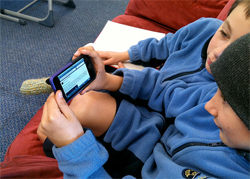
When students have access to their own Internet-connected devices at any time, both at home and at school, maths instruction has the potential to be revolutionised. Here are three great innovations available to maths instructors in 1:1 classrooms:
1:1 technology allows for extreme differentiation, even individualisation, of both the type of content each student is working on and the tasks each student is asked to complete. Instead of all working on the same topic at the same time, students in 1:1 classrooms can watch teacher-created videos (or videos from an external source) on whatever mathematical topics they need to learn next. Once that’s complete, the student can work on differentiated maths problems that match up with the topic taught in the video. As a result of 1:1 technology, each student can now be permitted to learn at his or her individualised pace, moving from topic to topic as quickly or slowly as needed. This shift to mastery-based learning, rather than calendar-based learning, can completely revolutionise a maths classroom all by itself.
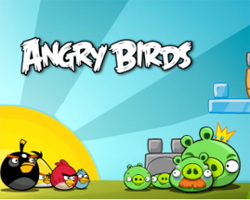
With a keen interest in ICT and maths, I have been exploring ways in which iPad apps (other than the “I can do maths…. 2+2” type) can enhance pupil progress and motivation. I believe that, when done the right way, gaming can play a huge role in learning.
If you are going to try any of these ideas in class, it's best to be quite familiar with the apps and how they work.
Here are 10 things I have tried:
Photo credit: http://www.angry-birds-game.info
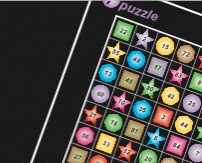
A couple of weeks ago, I saw a few tweets from @7puzzle aka Paul Godding. These were number challenges that were being shared each day through Twitter. Now I don’t know how many people were using them, had tried them with their class or had even seen them, but I suggested to Paul about making a blog. Through various emails and tweets I offered to create one for him and set-up a simple WordPress blog. This was done this weekend and the blog is now live. The benefit of having these on a blog is that they will be searchable and available to all as Twitter is blocked in some schools.
The aim is that each day there will be an easy (aimed at about year 5-8yr olds), medium (aimed at about 8-10yr olds) and hard (10+) questions. An example is: Using the numbers 2 4 6 8 just once each, and with all four operations + – x ÷ available, show how you can reach the target number of 24.
There’s no way of avoiding them. The times tables are a necessity if one is to progress along the mathematics learning journey. So, like them or not, knowing your times tables is important. They are the building blocks for further maths study later on – division, long division (urgh!), long multiplication, fractions, calculating area and so on.
Not only that, but knowing the times tables is important for tasks in our daily lives too – working out quantities in recipes (especially if doubling or quadrupling quantities); working out money-off discounts at the shops; measuring for furnishings around the home (widths of curtains for instance).

A community-driven platform for showcasing the latest innovations and voices in schools
Pioneer House
North Road
Ellesmere Port
CH65 1AD
United Kingdom